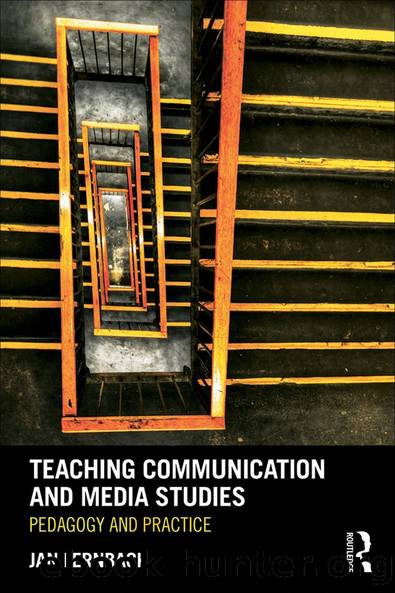Teaching Communication and Media Studies by Jan Fernback

Author:Jan Fernback [Fernback, Jan]
Language: eng
Format: epub
Tags: Social Science, Media Studies
ISBN: 9781135948696
Google: wYyLBQAAQBAJ
Publisher: Routledge
Published: 2014-11-20T05:58:29+00:00
Constructing Assignments and Exams in Accordance with Course Goals
As observed in the introduction to this book, media/communication curricula are multidimensional and include the performance of communication, the creation of media, and an engagement with media as an object of study. If our task is to build discipline-based learning environments in which students grasp the epistemology of the field, assessmentsâemanating from course goalsâmust connect with communication as a central facet of everyday life. What elements represent expertise in the field of media/communication? How do our assessment techniques address contemporary standards of proficiency? What are those standards? How does the research community help create or respond to those standards, particularly in light of social demands for accountability? Assessments can be tools for continued learning and reflection rather than a mere appraisal of what students have learned.
The purpose of all assessments, whether formal or informal, should be explained so students are clear about how assignments, exams, or course activities align with overall goals. Instructors dedicated to course goals that emphasize, for instance, the creation of narratives in new media platforms, want assessments enabling the creative process as opposed to basic dimensions of learning that, for example, multiple-choice exams might gauge. To create assessments that encourage continued learning, based in concrete course objectives, rather than simply appraising what students have learned already, Wiggins (1998) recommends standards for assessing contextually based learning objectives. These standards are context-specific if they:
1. [Are] realistic. The task or tasks replicate the ways in which a personâs knowledge and abilities are âtestedâ in real-world situations.
2. Require judgment and innovation. The student has to use knowledge and skills wisely and effectively to solve unstructured problems ⦠and the solution involves more than following a set routine or procedure. â¦
3. Ask the student to do the subject. Instead of reciting, restating, or replicating through demonstration [course subject matter], the student has to carry out exploration and work within the discipline. â¦
4. Replicate or simulate the contexts in which adults are âtestedâ in the workplace, in civic life, and in personal life. Contexts involve specific situations that have particular constraints, purposes, and audiences. Typical school tests are context-less. Students need to experience what it is like to do tasks in workplace and other real-life contexts, which tend to be messy and murky. In other words, genuine tasks require good judgment. â¦
5. Assess the studentâs ability to use a repertoire of knowledge and skill efficiently and effectively to negotiate a complex task. Most conventional test items are isolated elements of performance â¦
6. Allow appropriate opportunities for students to rehearse, practice, consult resources, and get feedback on and refine performances and products. Although there is a role for the conventional âsecureâ test that keeps questions secret and keeps resource materials from students until during the test, that testing must coexist with educative assessment if students are to improve performance. ⦠(pp. 22, 24)
The point of such assessments is to align with course goals in ways that are meaningful to students throughout their lives. These assessments
Download
This site does not store any files on its server. We only index and link to content provided by other sites. Please contact the content providers to delete copyright contents if any and email us, we'll remove relevant links or contents immediately.
Cecilia; Or, Memoirs of an Heiress — Volume 1 by Fanny Burney(32059)
Cecilia; Or, Memoirs of an Heiress — Volume 3 by Fanny Burney(31455)
Cecilia; Or, Memoirs of an Heiress — Volume 2 by Fanny Burney(31405)
The Lost Art of Listening by Michael P. Nichols(7158)
We Need to Talk by Celeste Headlee(5412)
Asking the Right Questions: A Guide to Critical Thinking by M. Neil Browne & Stuart M. Keeley(5355)
On Writing A Memoir of the Craft by Stephen King(4661)
Dialogue by Robert McKee(4160)
Pre-Suasion: A Revolutionary Way to Influence and Persuade by Robert Cialdini(3975)
I Have Something to Say: Mastering the Art of Public Speaking in an Age of Disconnection by John Bowe(3775)
Elements of Style 2017 by Richard De A'Morelli(3235)
The Book of Human Emotions by Tiffany Watt Smith(3138)
Fluent Forever: How to Learn Any Language Fast and Never Forget It by Gabriel Wyner(2915)
Name Book, The: Over 10,000 Names--Their Meanings, Origins, and Spiritual Significance by Astoria Dorothy(2836)
Good Humor, Bad Taste: A Sociology of the Joke by Kuipers Giselinde(2824)
Why I Write by George Orwell(2773)
The Grammaring Guide to English Grammar with Exercises by Péter Simon(2646)
The Art Of Deception by Kevin Mitnick(2622)
Don't Sleep, There Are Snakes by Daniel L. Everett(2499)
